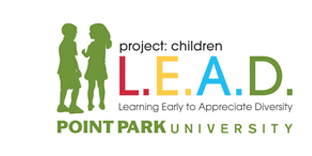Lesson 7: 3rd Grade Getting to Know You Lesson Series

Getting to Know You
Student Teachers: David Montgomery and Ayesha Moorefield
Project Children L.E.A.D. Director: Dr. Vincenne Revilla Beltran
Subject Area: Music, Art, Language Arts, Creative Movement
Grade level: 3rd Grade
Length of Lesson: 45-55 minutes
Learning Goals Based on the Pennsylvania Academic Standards:
The overall purpose of this lesson is to provide the students with tools that will promote high levels of proficiency with the use of vocabulary, identification, explanation, and the analysis of common poetic themes while displaying creativity. The students will identify the structures of poetry and patterns, identify the literary devices (ex: Haiku, acronyms) while recognizing environmental factors through a poetic piece. The students will learn that poetry is a form of expression that can act as an outlet for various feelings and emotions.
Academic Standards:
Reading, Writing Speaking and Listening:
1.1A: Identify the purposes and types of text (e.g., literature, information) before reading.
1.3C: Identify literary devices in stories (e.g. rhyme, rhythm and personification)
1.3D: Identify the structures in poetry (e.g. pattern books, predictable books, nursery rhymes).
1.3H: Demonstrate fluency and comprehension in reading: read a variety of genres and types of text.
1.4A: White narrative pieces (e.g., stories, poems, plays).
Arts and Humanities:
9.1.3L: Identify, explain and analyze traditions as they relate to works in the arts (e.g. storytelling - plays, oral histories - poetry, work songs- blue grass).
Objective:
After defining different types of poetry and providing examples of authors, classic poems, and basic literary terms the student will be able to express emotions by illustrating their experiences through the creation of works in the arts. The students will recite their poetry in rhythmic fashion using acronyms and complete an assignment displaying recognition of literary terms. These activities will allow the students to provide detailed descriptions about themselves while using illustrations.
Materials and Equipment needed:
Paper Pencils Chalkboard/dry-erase board
Glue sticks Crayons Construction paper
Colored markers Dry erase marker or chalk
Adaptations and accommodations to Differentiate Instruction:
- During class time, we will pair more skilled students with students who have less skills so that the more skilled students get an opportunity to help their peers while the less skilled get an opportunity to learn in a peer setting.
- All students will be exchanging their poems and reading others' poems aloud.
Procedures:
- Ask the students if anyone knows what a poem is, and question their definitions and descriptions.
- Explain what a poem is, and tell the class they will be reading and writing poetry today.
- Introduce the featured poem book ("Poems of Childhood") and select a few poems to read aloud, citing different styles of poem (i.e., rhyming, free verse, haiku). Elaborate on each of the featured styles.
- Pass out poem packet (attached) and read aloud with the class.
- Explain that today's lesson will focus on getting to know each other. We are all going to share poems describing ourselves and sharing with the class to help us get to know each other.
- Ask the class if anyone knows what an adjective is, and give examples enriching their understanding of the concept. Have the students list adjectives on the board.
- Explain what an acronym poem is, and model construction of one with student help on the blackboard.
- Have the students construct their own acronym poem using their name, and only adjectives.
- Now explain what a rhyming poem is, and the different types of syllabic separations of rhythm and rhyme, giving examples from the poem book. Ask the students to explain these back to the teacher and identify what classifies each poem the teacher reads. Have the class construct a rhyming poem as a team, with the subject of the poem being school.
- Next, pass out crayons, markers and plain paper to the students and explain that they will be making self-portraits to go along with their poems. Encourage the students to be creative and incorporate drawings of things they like as well (i.e. a soccer ball if they like to play sports).
- After this, explain that the students will be attaching both the poem and the self-portrait to construction paper with the glue sticks provided. Show the students that the construction paper has already been measured and marked as to where their papers will be centered, framed and glued. Demonstrate to the students how to glue the project together.
- After finishing the project and cleaning up, ask students individually to tell the class what a poem is, and the things poems can be used to do.
References:
Custom Crossword Puzzle. Expressing Yourself with Words. Retrieved
September 28, 2004, from on-line database Variety Games on the World
Wide Web: http://www.variety-games.com
Field, Eugene (1932). Poems of Childhood. Charles Scribner's Sons: Chicago.
Julia S. Field
Mare De La, Walker (1990). Come Hither: A Family Treasury of Best-Loved
Rhymes and Poems for Children. Avenel Books: New York.
Rosen, Howard (1998). Classic Poetry: An Illustrated Collection. Candlewick
Press: Cambridge.
St. Pierre, Todd-Michael (1998-2002). My Dream (A Vision of Peace).
Retrieved September 28, 2004, from on-line database Tale-Spin on the
World Wide Web: http://www.pitara.com

